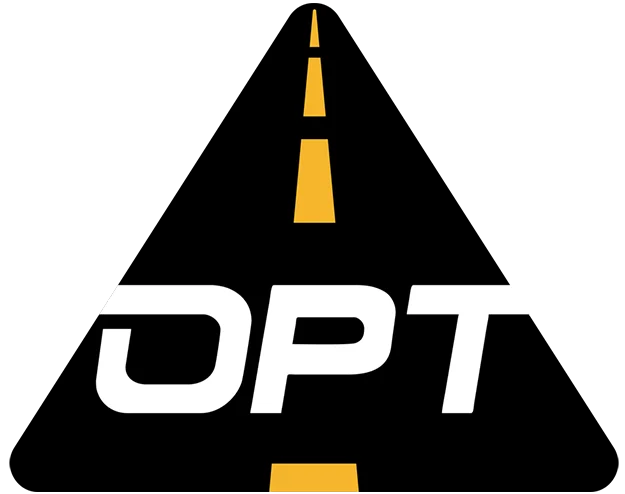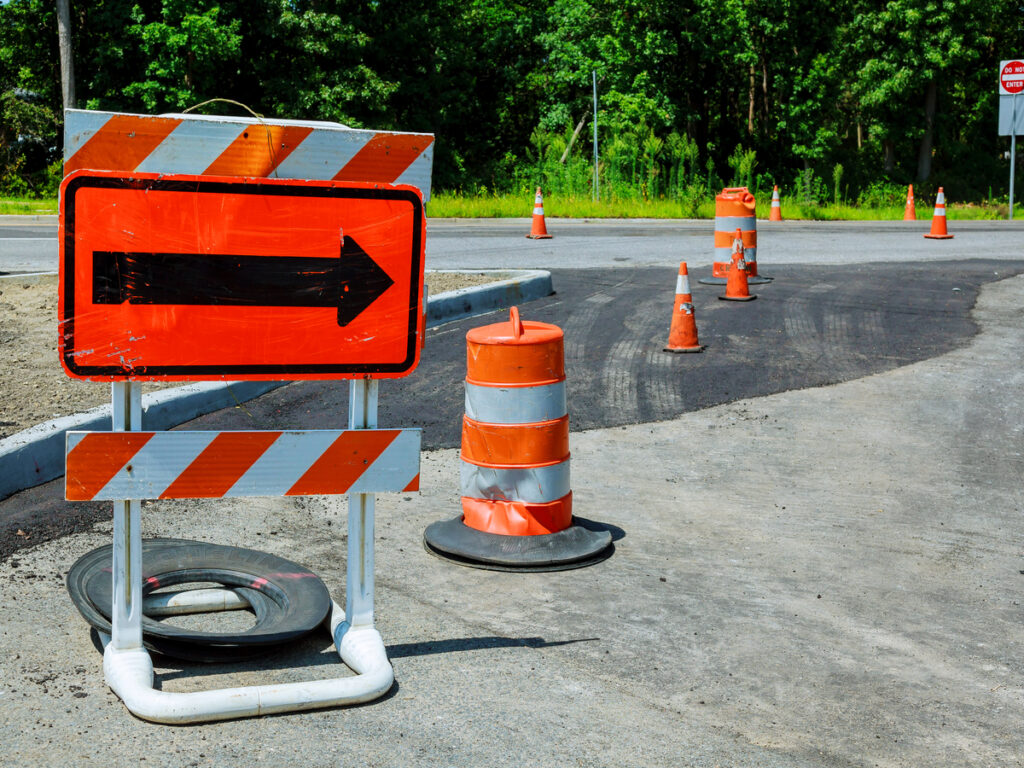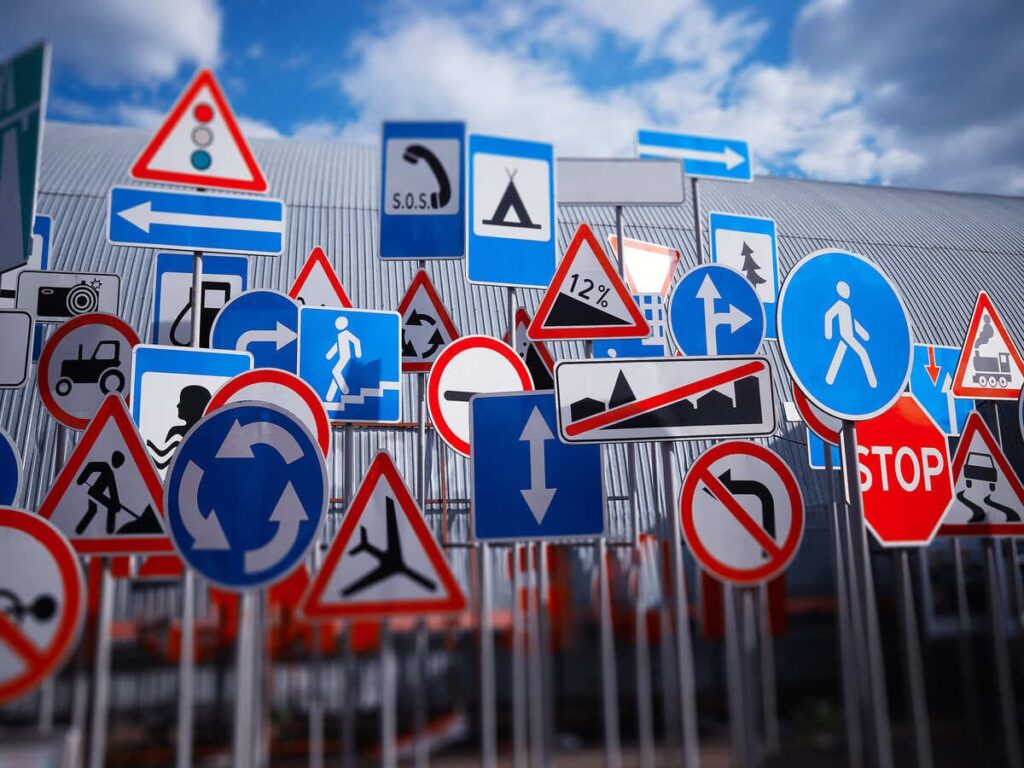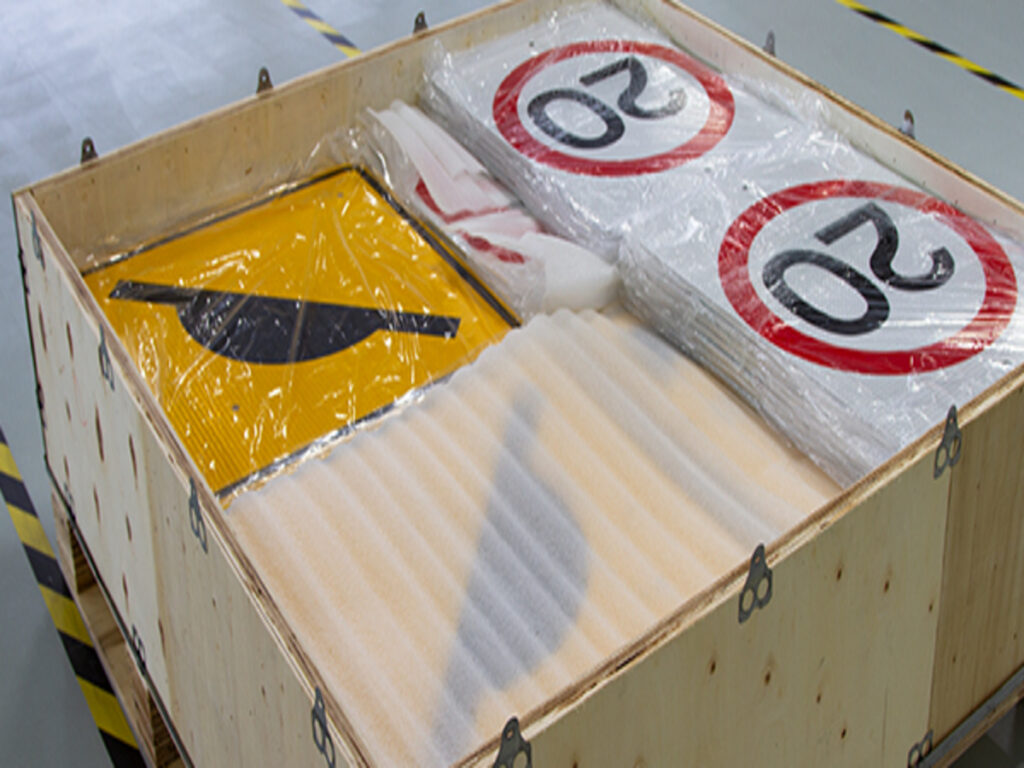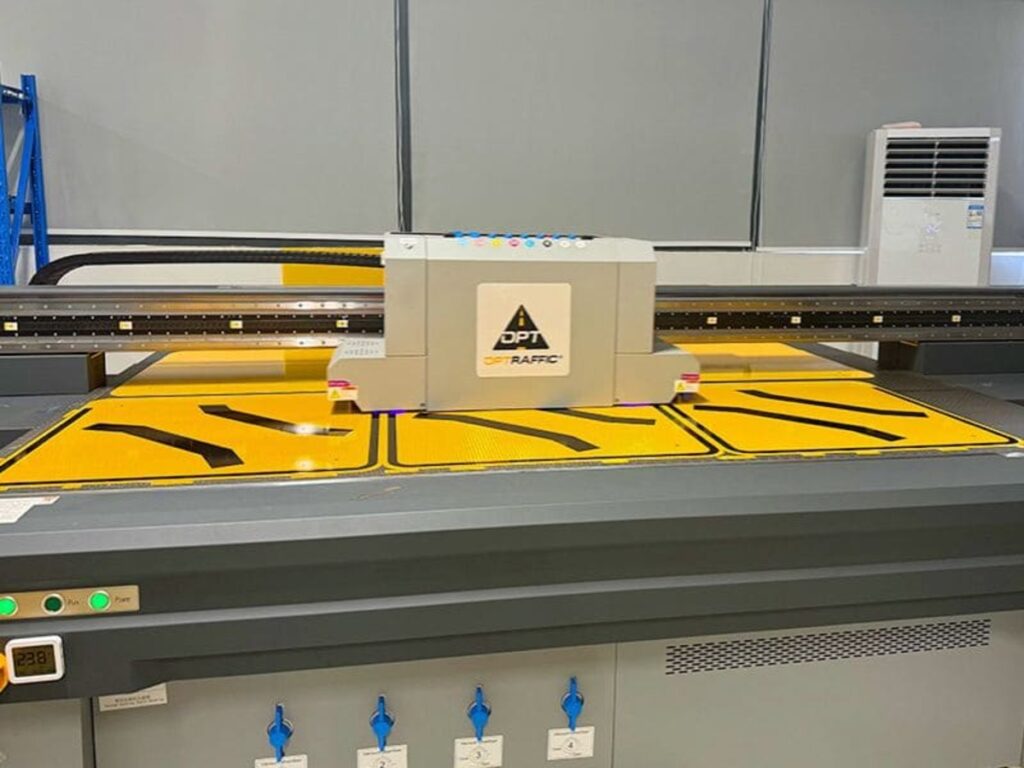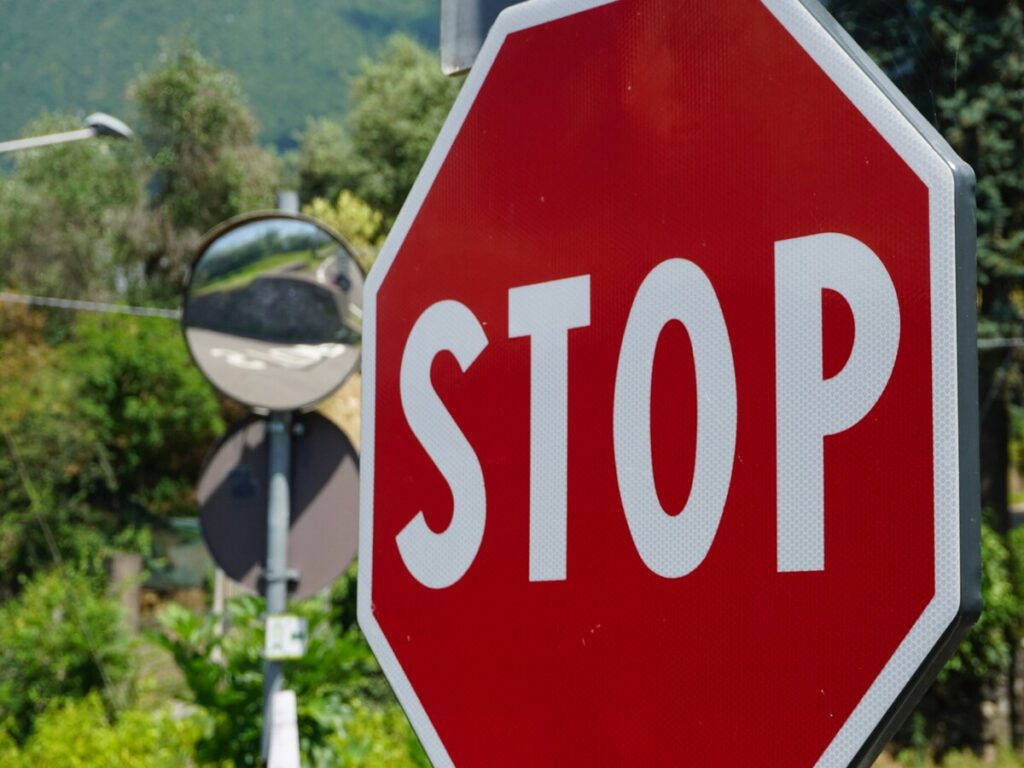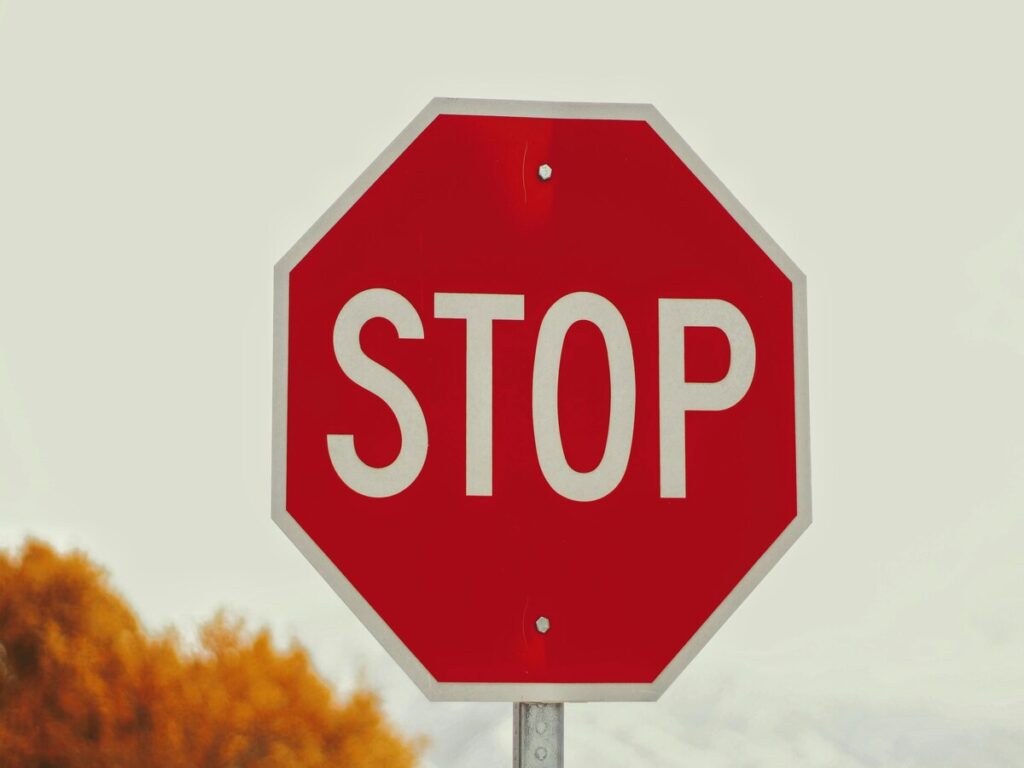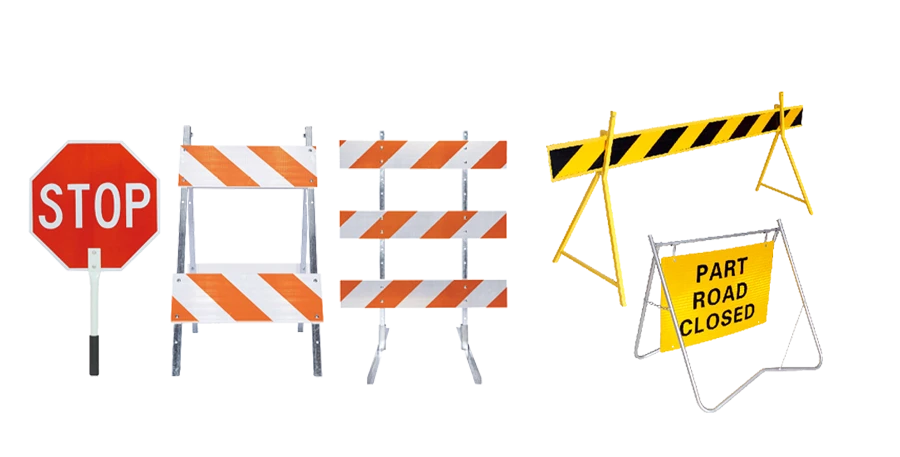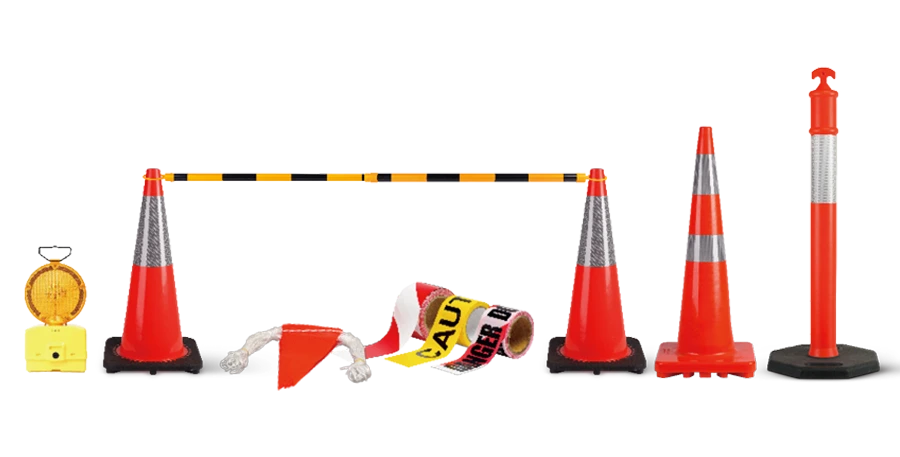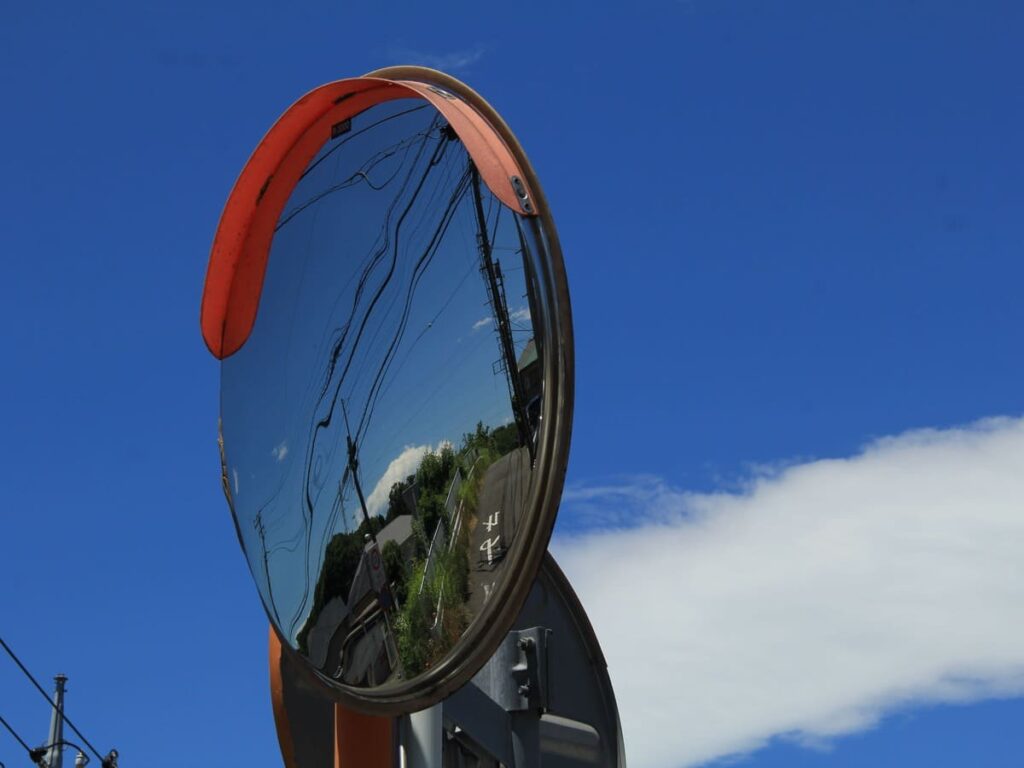
Intersections present numerous safety challenges, such as blind spots and obstacles like parked cars that can obstruct your view. Em áreas urbanas, daylighting—the practice of removing items that block crosswalks—can significantly improve visibility and lower pedestrian crashes by up to 30%. Em estradas rurais, the dangers are different. Higher speed limits, fewer streetlights, and unmarked intersections increase the risk of accidents, even though there are fewer people on these roads.
To improve visibility and safety, convex safety mirrors and reflective signs are crucial. These tools work together to provide better sightlines, allowing drivers to see around corners or through blind spots more clearly, and ensuring important road information is visible both day and night.
No OPTRÁFEGO, we offer a wide range of traffic safety products, incluindo convex mirrors, Sinais reflexivos, and other visibility solutions. These tools are designed to enhance road safety for drivers, pedestres, and cyclists alike. Explore our selection today to find the right safety solutions for your roadways.
Takeaways -chave
- Convex safety mirrors help drivers see around corners. They also help drivers see hidden spots. Isso pode impedir que os acidentes aconteçam.
- Reflective signs are easy to see at night. They are also easy to see in bad weather. Drivers can spot warnings and instructions better.
- Using both convex mirrors and reflective signs is safer. They help cover more risks at intersections.
- It is important to take care of mirrors and signs. Limpe -os com frequência. Check if they are in the right place. Isso ajuda a manter todos em segurança.
- These safety tools do not cost much money. They do not need electricity. They are a smart way to make roads safer.
Intersection Visibility Challenges
Blind Spots and Obstructions
Intersections can be hard to see because of blind spots. Blind spots can hide people, bicicletas, or cars from your eyes. Your car’s A-pillars, side mirrors, and things inside your car can make blind spots worse. Nos cruzamentos, A-pillars can block your view. You might not see people, bicicletas, or other cars.
Dica: Slow down when you get close to intersections. Watch for people and bikes in crosswalks. Look around your A-pillars before moving ahead.
Blind spots lead to many crashes every year. Mais do que 840,000 crashes happen because of blind spots. Sobre 300 people die each year from these crashes. Large vehicles have more deadly crashes than cars. Blind spots also cause 15% of lane-change crashes. Many people walking or biking get hurt each year because drivers cannot see them.
| Descrição da estatística | Valor |
|---|---|
| Annual Blind Spot Accidents | Sobre 840,000 accidents/year |
| Fatalities from Blind Spot Accidents | Aproximadamente 300 deaths/year |
| Blind Spot Accidents Involving Large Vehicles | Higher fatality rates than cars |
| Percentage of Lane-Change Accidents | 15% attributed to blind spots |
| Pedestrian and Cyclist Risk | Thousands of injuries annually |
Urbano vs.. Rural Safety Issues
Blind spots and seeing problems are different in cities and the countryside. Nas cidades, there are more intersections, carros, e pessoas. This means blind spots can cause more problems. Na verdade, 32% of crash deaths at intersections happen in cities. Parked cars, edifícios, and trees can block your view and make more blind spots.
No campo, there are fewer intersections, but the risks are still high. Rural intersections often have less light and faster cars. Aqui, 16% of crash deaths at intersections happen. Bad weather like fog, chuva, and snow can make it even harder to see past your blind spots.
| Ambiente | Percentage of Crash Deaths at Intersections |
|---|---|
| Rural | 16% |
| Urbano | 32% |
| Condição climática | Impacto na visibilidade |
|---|---|
| Névoa | Makes it much harder to see far ahead |
| Chuva | Makes it hard to see and stop quickly |
| Neve | Hides road signs and makes it hard to see |
You can make intersections safer by adding more lights, putting up more signs, and keeping road lines clear. These steps help you see better and keep everyone safe at intersections.
Convex Safety Mirrors for Enhanced Visibility
Field of View Benefits
Convex mirrors help you see better at intersections. These mirrors let you see more than regular mirrors. You can spot blind spots that normal mirrors miss. When you drive near busy places or sharp turns, you can see around corners. The curved surface of convex safety mirrors spreads light rays. This gives you a wider view of the road. You can notice dangers sooner and avoid crashes.
Tests show convex mirrors help drivers see better at road junctions. They make drivers act safer, especially in crowded areas where it is hard to see.
Convex safety mirrors lower blind spots in different ways:
- They show more of the road than flat mirrors. You can see around corners and hidden spots.
- The special curve spreads light from a virtual point. This helps you see dangers early.
- You can react faster to people, bicicletas, or cars you cannot see.
Safety Accountability Mirrors in Action
Safety accountability mirrors are important in risky places. You find them where it is hard to see and blind spots are common. These convex mirrors help keep people safe by lowering accidents and close calls. Aqui estão alguns exemplos:
| Aplicativo | Detalhes |
|---|---|
| Warehouse Operations | Convex safety mirrors cut forklift crashes by 35%. |
| Construction Site Traffic Control | Pole mirrors lowered near-miss events by 40%. |
| Office Parking Lots | Mirrors helped drivers see better and lowered close calls. |
| Manufacturing Facility | Mirrors cut equipment accidents by 30%. |
| Retail Distribution Center | Ceiling mirrors helped traffic move better. |
| Public Facility Entrance | Convex mirrors lowered pedestrian incidents. |
| Hospital Emergency Zones | Mirrors helped emergency vehicles see better. |
| Airport Terminal Access Roads | Mirrors lowered car crashes near terminals. |
| Educational Campus Crosswalks | Mirrors made school bus routes safer for walkers. |
| Mining Operations | Mirrors helped machines move better in tunnels. |
| Shopping Mall Loading Bays | Mirrors helped drivers notice more in delivery zones. |
| Railway Station Platforms | Mirrors lowered dangers at platform entrances. |
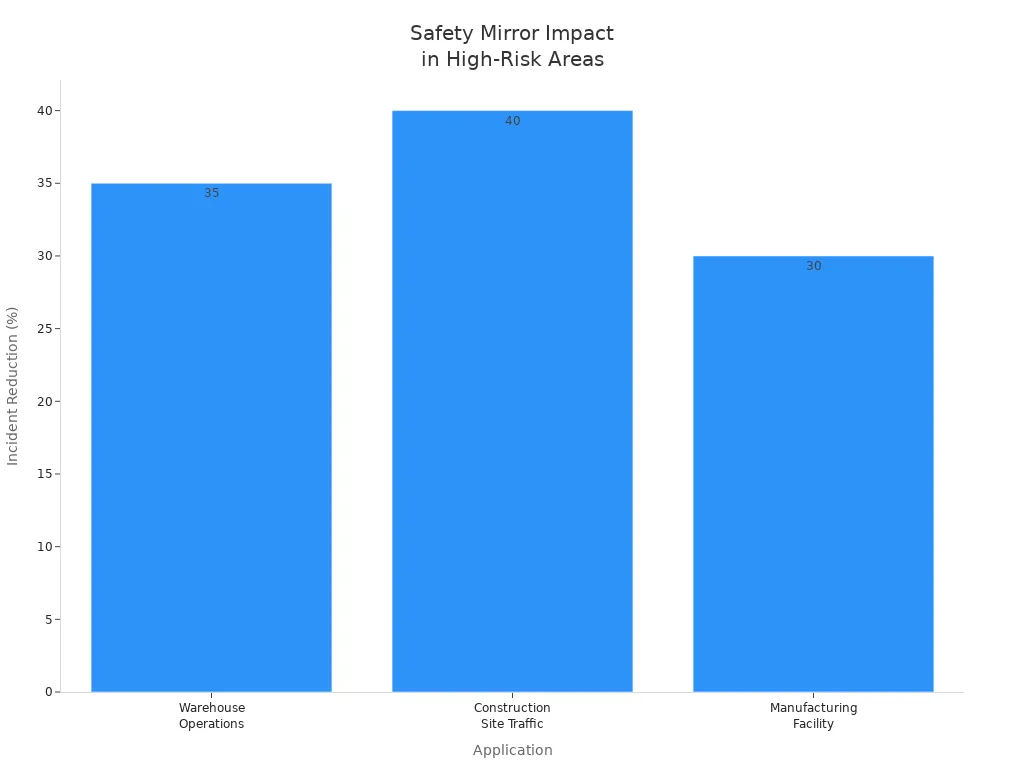
Placement for Maximum Effect
You get the most help from Road sign mirrors if you put them in the right spot. Good visibility depends on the height and angle of the mirror. Here are some tips for placing mirrors:
- In parking garages, put mirrors at ramps, near elevators, and around corners.
- In loading bays, place mirrors near doors and where cars meet walkways.
- At building entrances, mount mirrors so you can see cross-traffic.
- In warehouse aisles, put mirrors at busy spots and overhead at T-junctions.
- Fora, mount mirrors 2–3 meters high for a clear view.
- Dentro, place mirrors at eye-level for forklift drivers.
- Altura: Use 2–2.5 meters for walking areas and 3–4 meters for car zones.
- Ângulo: Move the bracket until you see the whole area.
- Best height: Usually between 5 e 8 pés, depending on the spot.
Check safety accountability mirrors often. Clean them and make sure they point the right way. This helps you see well and keeps blind spots small.
Reflective Signs and Traffic Safety
Improving Sign Visibility
You need clear signs to help you, especialmente à noite ou com neblina. Sinais reflexivos use special materials that bounce car headlights back to your eyes. This makes the signs easy to see when it is dark or foggy. Non-reflective signs can be hard to see at night, but reflective signs stay bright. When cities use more reflective signs, crash numbers go down. Sioux City tinha 38% fewer accidents after using better signs. Another study showed a 4.4% drop in nighttime crashes with more reflective stop signs.
Dica: Reflective signs help you see and react faster, even if you cannot see far ahead.
| Estudar | Resultados |
|---|---|
| Ripley (2005) | A taxa de acidentes em Sioux City caiu de 6.53 para 4.03 acidentes por milhão de milhas (-38%). |
| Persaud et al. (2008) | 4.4% queda nos acidentes noturnos após melhorar a refletividade dos sinais de parada. |
Types of Reflective Signs
There are different types of reflective signs on the road. Each type works best in certain places and shines at different distances. Aqui está um guia rápido:
| Type of Reflective Sign | Melhor para | Viewing Distance | Características | Caso de uso |
|---|---|---|---|---|
| Engineer Grade Reflective (Tipo I.) | Facility signage, Estacionamentos | Até 500 pés | Moderate reflectiveness | Parking lot signs, instructional signs |
| Reflexivo prismático de alta intensidade (Tipo IV) | Zonas escolares, faixas de pedestres | Até 1,000 pés | Mais brilhante, visible from farther away | Crosswalk warning signs, Sinais de segurança para pedestres |
| Highway Grade Reflective (Tipo VIII) | Rodovias, Via expressa | Até 1,500 pés | Highest reflectiveness | Sinais de limite de velocidade, highway exit signs |
Signs made with micro-prismatic or glass bead technology stay bright, Mesmo com mau tempo. These materials help signs last longer and keep them easy to see.
Estratégias de colocação
Reflective signs work best when you put them in the right spot. Siga estas etapas para obter os melhores resultados:
- Make sure the sign material meets safety rules like ASTM D4956.
- Put signs at the right height and angle so drivers can see them.
- Use strong posts and make sure they are secure.
- Point signs toward traffic for the best view.
- Check signs often for dirt, desvanecimento, ou dano.
- Use bigger signs for highways and smaller ones for parking lots.
- Change sign placement for city or country roads as needed.
Checking signs often and putting them in good spots helps everyone stay safe.
Synergy for Safer Intersections
Coordinated Placement
Intersections get much safer when you use both convex traffic mirrors and reflective signs. These tools work best if you put them in the right places. Convex safety mirrors help you see around corners and spot blind spots. Reflective signs give clear warnings and instructions. Using both together covers more risks than just one.
You should follow a plan for where to put these tools. Put convex safety mirrors where drivers need to see past obstacles or sharp turns. Place reflective signs at eye level or where drivers look first. Make sure signs are close to dangers but not blocked. Use mirrors with bright borders outside. Put mirrors at aisle ends or outside corners to stop accidents. Às vezes, roundtangular mirrors help you see better near machines or low ceilings.
Dica: Always use the same placement rules for all safety tools. This helps everyone know and trust the system.
You can add other safety tools too. Use barriers or bollards to keep people away from cars. Colocar redutores de velocidade and convex traffic mirrors nearby so drivers slow down and see better. Add extra lights in dark spots to make mirrors and signs easier to see. These steps help stop accidents and keep walkers safe.
| Estratégia | Descrição |
|---|---|
| Floor markings | Show clear lanes for equipment and paths for people |
| Sinalização | Point out intersections, blind corners, and shared spaces |
| Speed control measures | Make people move slower in risky places |
| Operator training | Teach how to use mirrors and stay alert |
Comprehensive Safety Systems
A good intersection safety system uses many tools together. You need more than just mirrors or signs. When you use both, you build a strong safety network. Here are the main parts of a good system:
- Barriers and bollards keep people and cars apart.
- Speed bumps slow cars down in risky spots.
- Warning signs and extra lights help you see and know what to do.
- Convex safety mirrors help you spot danger early.
- Reflective signs give clear rules and alerts.
Pick high-quality convex mirrors. Choose ones that do not break or scratch easily. Get the right size for each spot. Use strong materials like alumínio, ACM, or polycarbonate for signs and mirrors. These last longer and work well outside. Put signs where drivers can see them fast. Keep signs close to dangers but not blocked. Use the same placement rules everywhere so the system is easy to follow.
Observação: These tools cost little to install and keep up. You do not need electricity. They last five to ten years or more if they are weatherproof. You can add them to any road or parking lot without big changes.
Long-Term Traffic Safety Benefits
Using both convex safety mirrors and reflective signs gives long-lasting safety. These tools help stop accidents and keep people safe for years. You spend less money than on traffic lights or big building projects. You do not need power or wires. These tools work in all weather and last a long time.
You will see fewer accidents at intersections and parking lots. Drivers make better choices because they see more and get clear instructions. Pedestrian safety gets better because people can cross roads with less danger. These tools help you follow safety rules and avoid fines. Parking lots get safer because it is easier to see around corners and walkways.
A strong safety system protects everyone—drivers, Caminhantes, e motociclistas. People trust your safety plan. Ao longo do tempo, you will see fewer accidents and more people following the rules. This way helps stop accidents and keeps your community safe.
You can make intersections safer by using convex safety mirrors and reflective signs together. This helps make workplaces safer and improves how safety is managed. You get a wider view, can judge distances better, and see clear warnings. These tools help people notice dangers and keep workers safe. Traffic teams and property owners should do these things:
| Actionable Steps | Descrição |
|---|---|
| Proper Selection | Choose mirrors that match what the intersection needs for workplace safety. |
| Posicionamento estratégico | Put mirrors and signs where drivers need to see dangers. |
| Manutenção regular | Clean and check mirrors often to keep safety strong. |
Usando essas ferramentas, you make traffic and workplaces safer and protect workers. This helps everyone notice dangers and keeps the workplace safe for all.
Perguntas frequentes
How do you choose the right size convex safety mirror for an intersection?
You should measure the viewing distance and the width of the area you want to see. Larger mirrors give you a wider view. Use a table to match mirror size to distance.
| Viewing Distance | Mirror Diameter |
|---|---|
| Até 20 ft | 12–18 in |
| 20–40 ft | 24–26 in |
| 40+ ft | 30 in or more |
Where should you place reflective signs for best results?
Place reflective signs at eye level and near the area where drivers need to make decisions. Certifique-se de que nada bloqueie o sinal. Clean the sign often so it stays bright and easy to see.
Can you use convex mirrors and reflective signs in parking lots?
Sim! You can use both in parking lots. Convex mirrors help you see around corners and tight spots. Reflective signs show rules and directions. This keeps drivers and walkers safe.
How often should you check and clean safety mirrors and signs?
Check mirrors and signs every month. Limpe a sujeira, pó, ou neve. Corrija qualquer dano imediatamente. This keeps your safety tools working well.
Do convex safety mirrors work at night or in bad weather?
Convex mirrors work in all light and weather. You see headlights or movement in the mirror, mesmo à noite ou no nevoeiro. Para melhores resultados, use mirrors with bright borders and place them near lights.
